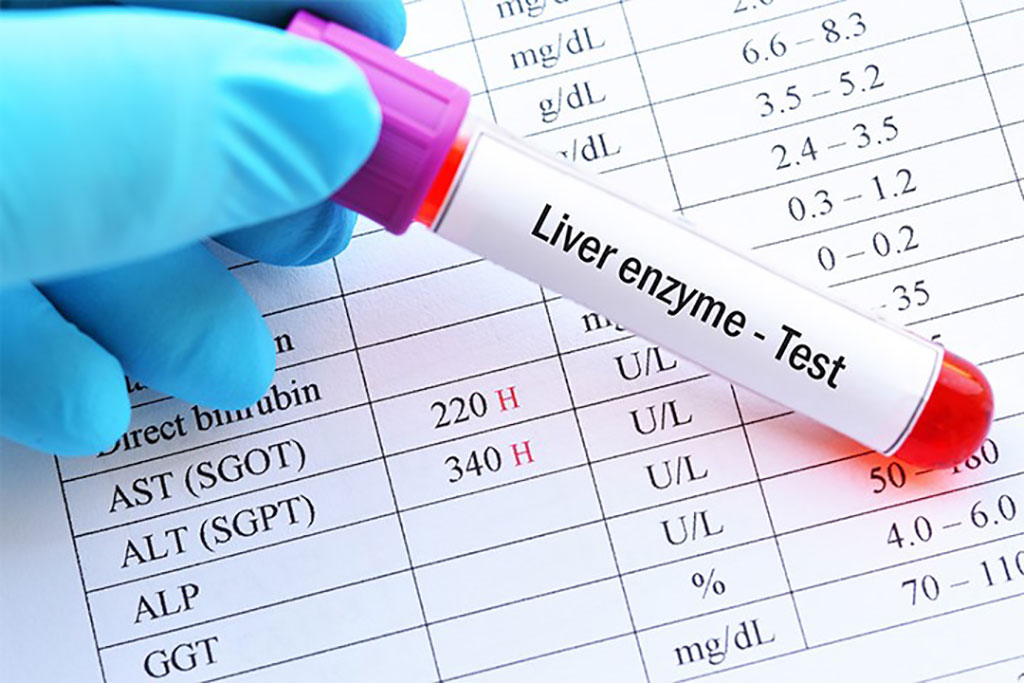High Liver Enzymes Increase Diabetes Risk for Hispanic Adults
By LabMedica International staff writers
Posted on 08 Apr 2021
Non‐alcoholic fatty liver disease (NAFLD) has been associated with increased risk of incident diabetes, but such evidence is lacking in the Hispanic/Latino population, which has high prevalence of obesity and NAFLD. Posted on 08 Apr 2021
NAFLD, also known as metabolic (dysfunction) associated fatty liver disease (MAFLD), is excessive fat build-up in the liver without another clear cause such as alcohol use. There are two types; non-alcoholic fatty liver (NAFL) and non-alcoholic steatohepatitis (NASH), with the latter also including liver inflammation.

Image: Elevated liver enzymes are associated with incident diabetes in US Hispanic/Latino adults (Photo courtesy of Judy George, BA, MBA)
Medical Scientists at the Albert Einstein College of Medicine (Bronx, NY, USA) analyzed data from 6,928 adults participating in the Hispanic Community Health Study/Study of Latinos (mean age, 38 years). Participants did not have diabetes at a baseline visit from 2008 to 2011 and returned for a follow-up examination a mean six years after baseline from 2014 to 2017. Alanine aminotransferase (ALT), aspartate aminotransferase (AST) and gamma-glutamyl transpeptidase (GGT) levels were measured at baseline. The team placed participants into quartiles for ALT, AST and GGT based on their baseline levels. Incident diabetes was identified at follow-up through laboratory measurements or the use of diabetes medication.
The scientists reported that of the 738 participants who had diabetes during follow-up, 533 were identified through blood tests. Adults were more likely to develop diabetes if they were men, older or of Puerto Rican background or had a lower education level, higher BMI, higher waist circumference or a lower score on an alternative healthy eating index. adults in the highest ALT quartile had a greater risk for developing diabetes compared with those in the lowest quartile (Relative Risk [RR] = 1.51). Participants in the highest quartile for GGT also had an increased risk for diabetes at follow-up compared with the lowest quartile (RR = 2.39). Both associations remained after adjusting for baseline fasting glucose. After adjusting for homeostatic model assessment of insulin resistance, only a high GGT level was significantly associated with incident diabetes.
The risks for incident diabetes with ALT and GGT were similar for all Hispanic backgrounds except for Dominican ethnicity. ALT and GGT were both associated with incident diabetes regardless of obesity status. Those who had a high ALT and were light or moderate alcohol drinkers had an increased risk for incident diabetes (RR = 1.5), but there was no increased risk for those who did not drink. In addition to using liver enzyme testing to screen Hispanic adults for their diabetes risk, the findings revealed that lifestyle modifications can reduce a person’s risk for both NAFLD and diabetes.
Carmen R. Isasi, MD, PhD, FAHA, an associate professor and the senior author of the study, said, “Hispanics are at high risk of diabetes and its complications and are also at high risk for nonalcoholic fatty liver disease (NAFLD). Liver enzymes could be a simple clinical tool to screen individuals for diabetes risk, in addition to traditional factors.”
The authors concluded that higher ALT and GGT levels are associated with increased risk of developing diabetes among Latinos. Liver enzyme tests might aid in diabetes prevention by identifying high‐risk individuals. The study was originally published online on January 21, 2021 in the journal Diabetic Medicine.
Related Links:
Albert Einstein College of Medicine














